Collection: St. Miguel Febres Cordero Munoz
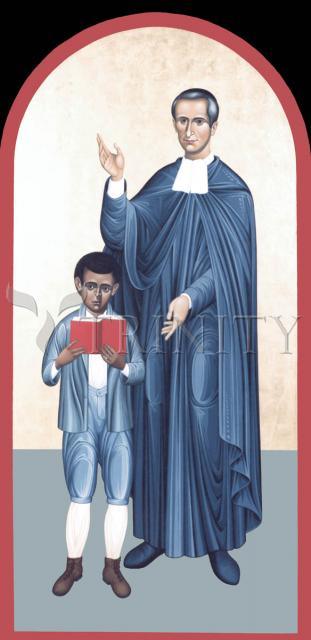
-
Sale
Wood Plaque Premium
Regular price From $99.95 USDRegular priceUnit price per$111.06 USDSale price From $99.95 USDSale -
Sale
Wood Plaque
Regular price From $39.95 USDRegular priceUnit price per$44.39 USDSale price From $39.95 USDSale -
Wall Frame Espresso
Regular price From $169.95 USDRegular priceUnit price per$133.45 USDSale price From $169.95 USD -
Wall Frame Gold
Regular price From $169.95 USDRegular priceUnit price per$133.45 USDSale price From $169.95 USD -
Wall Frame Black
Regular price From $169.95 USDRegular priceUnit price per$133.45 USDSale price From $169.95 USD -
Sale
Canvas Print
Regular price From $94.95 USDRegular priceUnit price per$105.50 USDSale price From $94.95 USDSale -
Sale
Metal Print
Regular price From $124.95 USDRegular priceUnit price per$138.83 USDSale price From $124.95 USDSale -
Sale
Acrylic Print
Regular price From $124.95 USDRegular priceUnit price per$138.83 USDSale price From $124.95 USDSale -
Sale
Giclée Print
Regular price From $19.95 USDRegular priceUnit price per$22.17 USDSale price From $19.95 USDSale -
Custom Text Note Card
Regular price From $300.00 USDRegular priceUnit price per$333.33 USDSale price From $300.00 USDSale
ARTIST: Br. Robert Lentz, OFM
ARTWORK NARRATIVE:
Miguel Cordero was a native of Ecuador. He was taught by the de la Salle Christian Brothers, and decided to join their order. His parents opposed his desires at first, but then relented and allowed him to follow his heart.
As a Christian Brother he was an outstanding teacher, both for his dedication and his skill. He never lost his temper with his students and, although he taught the same subjects year after year, he never stopped trying to find better, more interesting ways to present the material. He wrote a number of textbooks, some of which were adopted by the government for use throughout Ecuador. The other Christian Brothers remembered him for his cheerfulness and religious devotion. "The heart is rich when it is content," he wrote, "and it is always content when its desires are fixed on God."
In 1905 he was sent to Europe to translate texts from French into Spanish. Five years later he caught a cold, which developed into pneumonia. He died on February 9 and was buried in Spain. During the Spanish Civil War, his grave was uncovered and his body was found to be intact. The Ecuadorian government brought his body home, and he was reburied in Quito. Since that time, many miracles have been attributed to his prayers.
His feast day is February 9.
- Art Collection:
-
Saints & Angels
- Lentz collection:
-
Saints, Martyrs and Holy People
Miguel was born of a prominent family. He was also born with an unknown disability and he was unable to stand until age five when he received a vision of Our Lady. At age eight he was miraculously protected from being mauled by a wild bull. In 1863, at age nine, he enrolled in a school run by the Christian Brothers, which Order had only recently come to Ecuador. He joined the Brothers on 24 March 1868 at age 13.
Miguel was a school teacher at El Cebollar School, Quito, a position he held for 32 years. He was a gentle, dedicated, and enthusiastic teacher. He wrote his own textbooks, the first at age 17; some were adopted by the government, and used throughout the country. He wrote odes, hymns, discourses on teaching methods, plays, inspirational works, and retreat manuals. Miguel was elected to the Ecuadoran Academy of Letters in 1892, followed soon after by the Academies of Spain, France, and Venezuela. He conducted religious retreats, and prepared children for their First Communion. He was a novice director for his house from 1901 to 1904.
Miguel was sent to Europe in 1905 to translate texts from French to Spanish for use by the Order; working primarily in Belgium. His health began to fail in 1908, and he was transferred to the school near Barcelona, Spain. He continued to work, but slowly, his health continued to fail, and he died there in 1910. In addition to being a religious role model, Miguel is considered a national hero in Ecuador for his success in so many worthwhile areas.
Born: November 7, 1854 at Cuenca, Ecuador
Died: February 9, 1910 of pneumonina at Premia del Mar, Spain, and buried there; grave disturbed during the Spanish Civil War, and his body found incorrupt; re-buried in Quito, Ecuador, his tomb has become a pilgrimage site
Beatified: October 30, 1977 by Pope Paul VI
Canonized: October 21, 1984 by Pope John Paul II
Readings:
The heart is rich when it is content, and it is always content when its desires are fixed on God.
—Saint Miguel
Additional Items Our Customers Like
-

St. Miriam Dancing in Darkness (by Br. Mickey McGrath, OSFS)
-
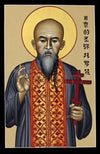
St. Mitrophan Tsi Chang (by Br. Robert Lentz, OFM)
-
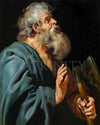
St. Matthias the Apostle (by Museum Religious Art Classics)
-
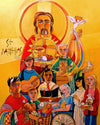
St. Matthias the Apostle (by Br. Mickey McGrath, OSFS)
-
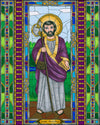
St. Matthias the Apostle (by Brenda Nippert)
-
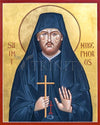
St. Nikephoros (by Robert Gerwing)


















